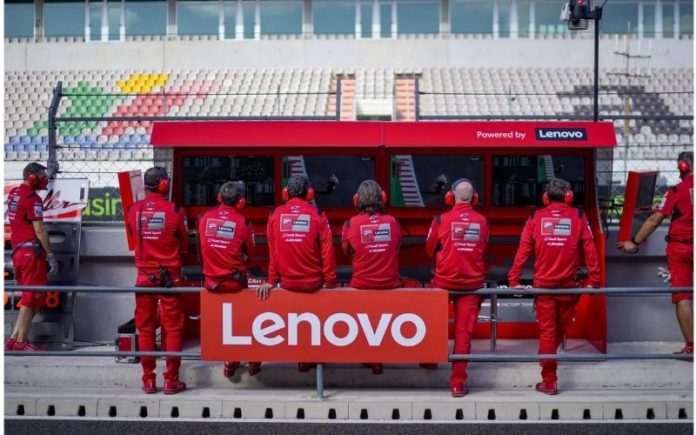Paolo Ciabatti is the Sporting Director for Ducati Corse, the racing division of the Italian motorcycle powerhouse. With his decades in the racing world, you could say his expertise is second to none. He’s watched the evolution of racing over the past 2 years. And as the fourth season of Ducati and Lenovo’s MotoGP technology partnership – the first with Lenovo as title partner – is well underway, those changes are on full display. So, we sat down with Ciabatti to talk innovation, big data, how Ducati punches above weight as a small company racing against giants, and how today’s riders are utterly different from those who came before.
How are Ducati’s innovations shaping the evolution of MotoGP?
In Bologna, over the years, we have been able to innovate. I think the most evident innovation you see today in MotoGP is the aerodynamics.
We also created a starting device so the bike’s rear suspension goes down and even the front suspension goes down to give the rider a better start and avoid wheelies. Our engineers are young, but they have a lot of smart ideas. This is something that stays within our company and is one day transferred to the production bikes.
How does the Lenovo technology help you workshop those new ideas?
Data is one of the most important things for us. Through the sensors, we process so much information. We manage everything through the servers.
Last year because of the pandemic, the number of people allowed to travel to races was limited. Thanks to the Lenovo technology we were able to create what we’re calling a virtual garage. Our engineers who could not join us on the racetrack were in the racing department connected live with the circuit.
Being connected, being able to process data quickly with a powerful machine through powerful servers is a key to success. I think it’s fair to say we do all the best possible analyses thanks to the Lenovo servers. Then hopefully we make the right choice for the race.
What are some ways Ducati is upping its game year after year?
Ducati is definitely not the biggest manufacturer in MotoGP—we are actually the smallest, most likely. So, in order to compete, we have only one way and it’s to think differently, to be innovative, and to look for new solutions. Most of the innovations that Ducati has brought into MotoGP have been—well, I’ll just say adopted by other manufacturers because it’s true. Being a medium-size motorcycle manufacturer, we’re leading the development in MotoGP. This is a great pride point for our working group.
We make a decision and move quickly and I think this has been one of the advantages of the Ducati Lenovo team, versus the other manufacturers. We can decide things quickly and bring new features to the bike very, very fast.
Does it help the team if the riders are technologically savvy?
It matters more and more. The riders give feedback when they come into the pit to express what they feel on the bike. The engineers try to adjust the bike as much as possible to make it better for the rider. Then when the session is over, the rider stays with the two engineers and looks through all the data. The more he understands about the behavior of the bike, the more he can correct mistakes or adapt his riding style to a specific corner. The younger generation of riders—and our riders are all quite young—they are more and more technologically inclined. It’s good because their feelings on the bike translate into data.
They are also very curious. If you come to the garage ten minutes after each session, you are going to see our riders watching the engineers’ computer screens trying to understand the bike’s behavior on each section to better understand what to do when they go out next time.
How do the lessons learned from each season help you prepare for the next?
Last year, the championship was very unusual. We started late and we had races back-to-back, with very little time to make any changes. We were racing on circuits in a different season —normally we would go to Jerez de la Frontera in May, and we raced there in early August when the temperature was scorching. Thanks to the problems we had, the solutions we found or even the solutions we didn’t find, gave us lots of information to analyze during and after the season to bring a more competitive bike on the racetrack the following year—this year.
Nowadays, it’s about being connected. We used to have large meetings in the office with all the engineers in a room. Obviously, this is still not possible. so being able to work remotely is important. Being able to count on Lenovo as a technological partner, we know whatever future technology we will need, we will have support. So, it’s more than just a sponsorship, it’s a real partnership on the track and it’s a technological partnership not just with Ducati Corse but also with Ducati Motor on future products.
















